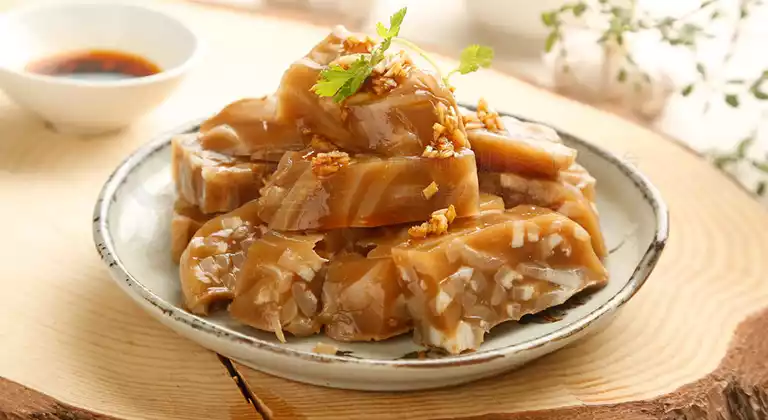Gelatin was used in ancient Europe to make various meat jelly among the nobles. In fact, in ancient China, people not only used donkey skin gelatin as a drug to treat diseases, but used animal skin and bones to make meat jelly as well.

Literally, “姜豉(jiangchi)” was misunderstood as mixture of ginger and fermented soybean easily, but it was actually meat jelly. It was a famous Kaifeng (the capital of Northern Song Dynasty) dish in Tang and Song dynasties. The ancients simmered the skined pork until the soup thickened, then cooled the soup to solidify. This meat jelly rich in collagen had a smooth and rubbery texture. It was cut into strips and flavored by spicy sauce that was usually made of green onions, ginger, garlic, coriander, leek, vinegar and fermented bean paste. There were many ways to make this dish: pig skin, pig feet, pig head, chicken, fish, lamb or beef can be used as raw materials. The broth did not solidify in summer easily, as the absence of refrigerator in ancient times. However, the ancients came up with an idea to put it in the cold well water.
Crystal meat jelly
This recipe was recorded in an ancient book in the Yuan Dynasty. It appeared little later than "jiangchi" as an improved version. The most conspicuous feature is that it is clear and transparent jelly. The fat of pig skin was removed and dry orange peel, peppercorn and green onion were braised with skin together to remove its blood smell. The cooked skin was taken out to cut into thin strips and simmered in original soup again. When the filtered soup became jelly, slice it into strips and ate with vinegar sauce. It can also be made from carp skin and scales.